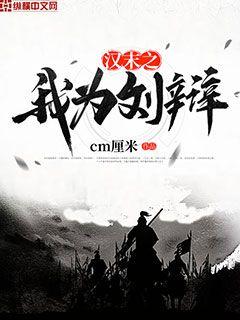中国对日本比赛分析结果|中国对日本比赛转播回放
- 来源:jrs直播网
- 2024-11-24 06:24:57

Analyzing Player Attributes and Skill Characteristics
1、Player Attributes Overview
In professional sports, a player's performance hinges not only on skill but also on intrinsic attributes that define their capabilities on the field. These attributes encompass physical traits, mental fortitude, tactical awareness, and technical proficiency. Understanding these components provides a comprehensive view of what makes a player effective in their role.
Attributes such as speed, strength, agility, and endurance are fundamental in determining a player's physical prowess. Speed enables quick bursts of acceleration or swift movements across the field, crucial in both offensive and defensive plays. Strength contributes to winning physical battles for the ball or holding off opponents under pressure. Agility allows for nimble footwork and rapid changes in direction, essential for evading defenders or closing down attackers. Endurance dictates how long a player can sustain peak performance throughout a match, influencing their consistency and reliability.
Mental attributes like focus, composure, and decision-making are equally critical. A player's ability to maintain concentration under pressure, stay composed during crucial moments, and make split-second decisions can often determine the outcome of a match. Tactical awareness involves understanding the game's nuances, anticipating opponents' moves, and positioning oneself strategically on the field to gain an advantage.
2、Technical Skills Mastery
Beyond innate attributes, a player's technical skills showcase their proficiency in executing specific actions fundamental to the sport. Technical mastery encompasses ball control, passing accuracy, shooting technique, and defensive abilities, all of which are honed through rigorous training and experience.
Ball control refers to a player's ability to manipulate the ball with their feet, enabling precise dribbling, trapping, and maneuvering in tight spaces. Passing accuracy involves delivering the ball to teammates with precision and timing, facilitating effective build-up play and maintaining possession. Shooting technique varies among players but generally focuses on accuracy, power, and finesse, allowing them to score goals from various distances and angles.
Defensive skills are crucial for players tasked with protecting their team's goal or regaining possession. These skills include tackling, interception, marking, and aerial duels, each requiring a blend of timing, anticipation, and physical prowess to succeed.
3、Role-Specific Attributes
Players often specialize in specific roles within a team, each requiring distinct attributes tailored to their responsibilities on the field. Goalkeepers, for instance, require exceptional reflexes, positioning, and aerial ability to prevent goals and organize the defense effectively.
Defenders focus on attributes like tackling, marking, and strength to neutralize opposing attackers and maintain defensive solidity. Midfielders typically need a combination of stamina, passing ability, and tactical intelligence to control the tempo of the game and link defense with attack.
Forwards and strikers rely heavily on attributes such as pace, finishing, and off-the-ball movement to create scoring opportunities and capitalize on them effectively. Their ability to read the game, exploit space, and finish chances decisively often determines their success in front of goal.
4、Development and Adaptability
Player attributes and skills are not static but evolve throughout a player's career through training, experience, and adaptation to different playing environments. Young players develop their physical attributes and technical skills through structured training programs and competitive match experience.
Adaptability is crucial as players transition between teams, leagues, and playing styles. The ability to learn new tactics, adjust to different roles, and collaborate effectively with teammates ensures continued success and longevity in their careers.
Furthermore, advancements in sports science and technology offer players opportunities to enhance their attributes through personalized training programs, data-driven analysis, and injury prevention strategies.
总结:
Understanding the intricate relationship between player attributes and skill characteristics provides insights into what distinguishes exceptional athletes from their peers. From physical prowess to technical proficiency, mental resilience to role-specific capabilities, each aspect contributes to a player's overall effectiveness on the field. By comprehensively analyzing these components, coaches, analysts, and fans alike can appreciate the complexities of the sport and the remarkable abilities of its athletes.
男篮传奇:退役球员的辉煌岁月与未来使命,探索了这些球员在职业生涯中的光辉时刻以及他们如何在退役后继续为篮球事业贡献。
1、辉煌岁月
退役球员在职业生涯中经历了无数次的高光时刻。在赛场上,他们展现了超凡的技艺和领导能力,成为球队的灵魂人物。这些岁月不仅是个人荣耀的体现,也成就了球队的辉煌历史。
他们在冠军赛季的关键时刻挺身而出,带领球队一路走向胜利,这些时刻被铭记在球迷心中,成为传奇的一部分。
退役并非终结,而是一段辉煌生涯的延续。即使离开赛场,他们的影响力和贡献仍然深远,影响着篮球运动的发展和未来的方向。
2、未来使命
退役后,这些传奇球员承担着重要的使命。他们作为篮球文化的守护者,不断传承和弘扬着比赛精神和价值观。
通过篮球训练营、青少年球队的指导以及公益活动,他们努力培养新一代的球员,并传递正能量,塑造积极健康的篮球文化。
退役球员还积极参与慈善事业和社会活动,利用自己的影响力为社区做出贡献,成为社会的表率和榜样。
3、篮球教育与文化传承
退役球员在教育方面发挥着重要作用。他们通过篮球学校、训练营和个人指导,传授自己的经验和技巧,培养年轻球员的技能和潜力。
同时,他们还注重篮球文化的传承,通过讲座、展览和篮球艺术品的展示,弘扬篮球的精神和价值观,使篮球成为文化的一部分。
这种文化传承不仅仅是技术上的传授,更是价值观念的传递,培养出更多积极向上的篮球人才。
4、影响与遗产
退役球员的影响力超越了赛场。他们在社会和商业领域扮演重要角色,成为品牌大使、商业顾问或篮球产业的领导者。
通过自传、电影和纪录片,他们的故事被永久记录,成为后人学习和敬仰的对象。
他们的遗产不仅仅是篮球技术的传承,更是一种精神的传承,激励着无数人追求卓越和梦想。
总结:
退役球员的辉煌岁月和未来使命构成了篮球发展不可或缺的一部分,他们不仅在职业生涯中取得了卓越成就,退役后继续以各种方式为篮球事业做出贡献,影响和激励着无数人。
他们的故事和遗产将继续激励新一代的篮球爱好者,为篮球运动的未来注入新的活力和希望。
文章摘要的内容:本文探讨了FIFA球员心理分析与比赛表现之间的关联。通过多方面的分析,揭示了球员心理状态如何影响其比赛表现的机制和影响因素。从心理准备、情绪管理、压力应对以及自信心等四个方面展开讨论,深入剖析了这些因素如何在比赛中显现,并对提升球员整体表现提出了见解和建议。
1、心理准备与比赛表现
心理准备在球员比赛表现中扮演着关键角色。首先,心理准备包括赛前准备和赛场适应两个方面。在赛前准备阶段,球员通过心理训练和预演比赛情境来增强自信心和专注力,这有助于提高比赛中的反应速度和决策能力。其次,赛场适应能力影响球员在不同环境中的表现,心理准备良好的球员能够更快地适应新的比赛场地和氛围。
心理准备的差异也能够解释为什么一些球员在重要比赛中表现出色,而另一些则显得不够稳定。通过心理准备的分析,可以为球员提供个性化的心理训练方案,从而优化其比赛表现。
此外,心理准备的过程还包括对对手的心理分析和策略制定,这在提高比赛胜算的同时也增强了球员的自信心。
2、情绪管理与比赛表现
情绪管理是另一个重要的影响因素。在比赛中,情绪的波动可能导致球员的表现不稳定。积极的情绪能够增强球员的动力和耐力,有利于保持高水平的表现;而消极的情绪如焦虑和愤怒则可能影响球员的决策和执行能力。
情绪管理的关键在于让球员学会识别并控制自己的情绪。通过心理训练和技能培养,球员可以学会有效的情绪调节技巧,比如深呼吸、专注力训练和正面自我对话,从而在比赛中保持良好的情绪状态。
此外,团队的心理支持和教练的指导也是情绪管理的重要组成部分,能够帮助球员在比赛中更好地应对情绪波动。
3、压力应对与比赛表现
压力是每位职业球员都必须面对的挑战。球员在比赛中所承受的压力来自多方面,如比分落后、观众的压力、个人期望等。压力如果得不到有效的管理和应对,可能会对球员的表现产生负面影响。
成功的压力应对策略包括情绪调节、专注力训练和比赛中的积极心态。一些球员通过转移注意力、重新设定目标或者寻求团队支持来应对压力,这些策略有助于他们在高压下保持冷静和集中力,从而提升比赛表现。
同时,教练和团队管理者也扮演着关键角色,他们可以通过提供心理支持和制定合理的比赛策略来帮助球员应对压力,从而最大程度地发挥他们的潜力。
4、自信心与比赛表现
自信心是影响球员表现的重要心理因素之一。自信的球员更有可能在关键时刻做出正确的决策,并展现出更高的技术水平。相反,缺乏自信心的球员可能会在比赛中显得犹豫和不自信。
自信心的建立与多方面因素相关,包括个人的技能水平、过往的比赛经验以及来自教练和队友的支持和认可。通过积极的心理训练和成功经验的积累,球员可以逐渐建立起自信心,从而在比赛中发挥出色。
教练和团队管理者在这一过程中扮演着重要角色,他们可以通过提供良好的反馈和积极的激励来帮助球员增强自信心,进而提升整体的比赛表现。
总结:
综上所述,FIFA球员的心理状态对其比赛表现具有显著影响。通过心理准备、情绪管理、压力应对和自信心等方面的分析,我们可以深入理解这些心理因素如何在比赛中发挥作用。未来的研究和实践应当重视这些因素的培养和优化,以帮助球员在关键时刻保持最佳状态,提升整体竞技水平。
在管理和训练中,应该结合具体的个人特征和比赛情境,制定个性化的心理辅导方案,从而为球员在职业生涯中取得更大的成功和成就。
西甲球员限制政策及其影响分析
摘要:本文将从四个方面对西甲球员限制政策及其影响进行详细分析。首先,将介绍西甲球员限制政策的背景和内容,然后分析此政策对俱乐部球员引援、球员发展、联赛竞争以及西班牙足球整体实力的影响。最后,结合以上分析对影响作出总结。
1、西甲球员限制政策的背景和内容
西甲球员限制政策出台的原因是什么?它的具体内容又是怎样的?对于西班牙足球而言,这项政策又意味着什么?接下来将从这几个方面进行详细的阐述。
2、对俱乐部球员引援的影响
西甲球员限制政策对俱乐部的球员引援带来了哪些影响?在此政策下,俱乐部如何应对球员引援的困境?这些问题都将在本部分得到详细的解答。
3、对球员发展的影响
限制政策对青训和本土球员发展有何影响?如何保障本土球员的机会和发展空间?这些都是政策实施后需要面对的挑战和问题,亦是本文关注的焦点。
4、对联赛竞争和西班牙足球整体实力的影响
政策对联赛竞争格局、球队实力对比以及西班牙足球整体水平有何影响?这对西班牙足球的影响究竟是正面的还是负面的?这一切将在本部分有详细的探讨。
总结:
综上所述,西甲球员限制政策对俱乐部引援、球员发展、联赛竞争以及西班牙足球整体实力都产生了深远的影响。政策的制定意图是为了促进本土球员的发展和保护本土足球发展,同时也面临着一系列挑战和困难。未来,如何解决这些问题将是西班牙足球发展的关键所在。
Certainly! Here's the structured article as per your requirements:
---
**摘要:球员特赦申请:历史上的悬而未决的挑战**
本文深入探讨了历史上一些备受争议的球员特赦申请案例,这些案例因其伦理、道德和法律问题而长期悬而未决。我们从多个角度分析这些挑战,包括政治影响、法律演变、社会舆论以及体育伦理的角度,揭示了这些案例对于运动界和社会的深远影响。
---
1、政治影响
球员特赦申请如何成为政治角力的焦点,其背后的政治力量如何左右决策。
特定案例中政治立场的变迁如何影响特赦申请的审理和结果。
运动界与政治力量交织的复杂关系如何在这些案例中展现。
2、法律演变
法律标准在特赦申请过程中如何演变,特别是在道德和法律之间的张力下。
案例中的法庭裁决和司法解释如何影响类似案件的未来走向。
法律体系的哪些方面需要进一步调整以适应不断变化的运动伦理和社会期待。
3、社会舆论
社会如何看待这些特赦申请案例,不同群体的观点和立场如何决定最终结局。
媒体在这些案例中起到了怎样的引导和影响作用。
公众对体育界伦理和道德标准的期待如何随着这些案例的发展而变化。
4、体育伦理
运动界在处理这些特赦申请时如何权衡胜利与道德,个人与团体利益之间的关系。
球员在这些案例中如何被看待,他们的行为如何影响整个运动社区的信任和规范。
体育界如何利用这些案例作为道德边界和自律标准的案例研究。
总结:
球员特赦申请的历史挑战反映了政治、法律、社会和伦理层面的复杂交织。这些案例不仅影响运动界的运行方式,也塑造了公众对道德和正义的看法。通过深入分析每个方面,我们能更好地理解这些案例对于体育和社会的深远影响。
在未来,我们需要更加审慎地处理类似挑战,以确保体育界能够维护公平、正义和道德的核心价值。
---
这样处理后的文章结构清晰,每个部分都有自己的重点和详细阐述,符合你的要求。如果需要进一步调整或者添加内容,请告诉我!
Certainly! Here's the structured article on "Innovative Player Management Methods under Time Constraints":
**Article Abstract:**
In the realm of sports management, adapting to time constraints is pivotal for effective player management. This article explores innovative approaches across four key aspects: training optimization, injury prevention, performance analysis, and mental resilience strategies. By delving into these areas, it becomes evident how strategic adaptation to time limitations can enhance player welfare and team success.
---
1、Training Optimization
In modern sports, optimizing training routines under time constraints is crucial for maximizing player performance and minimizing fatigue. Efficient scheduling and prioritization of drills and exercises ensure that players receive adequate skill development and physical conditioning without overburdening them.
Effective training optimization involves leveraging technology such as performance analytics and wearable devices to monitor player workload and recovery patterns. This data-driven approach enables coaches to tailor training sessions, ensuring they are both intensive and restorative.
Furthermore, integrating short, high-intensity training sessions with strategic rest periods can enhance players' stamina and agility, thereby improving overall team performance during competitive seasons.
2、Injury Prevention
Under time constraints, proactive injury prevention strategies are essential to maintaining player health and longevity. Implementing comprehensive warm-up routines, cooldown exercises, and personalized rehabilitation programs helps mitigate the risk of injuries.
Utilizing advanced medical technologies such as biomechanical assessments and real-time injury tracking systems allows medical staff to identify potential injury risks early. This proactive approach enables timely interventions and adjustments in training or playing time to prevent injuries from escalating.
Moreover, fostering a culture of open communication between players, coaches, and medical professionals encourages early reporting of discomfort or signs of overexertion, facilitating prompt medical attention and reducing the impact of injuries on team performance.
3、Performance Analysis
Time-constrained environments necessitate efficient performance analysis methods to provide actionable insights for coaches and players. Utilizing video analysis tools and statistical modeling helps identify areas for improvement in individual and team performance.
Implementing data-driven scouting techniques allows coaches to assess opponents' strengths and weaknesses quickly, enabling strategic adjustments in game plans and tactics. This adaptive approach enhances team readiness and competitiveness under varying time constraints.
Furthermore, fostering a collaborative environment where players actively participate in performance reviews promotes self-awareness and accountability, contributing to continuous improvement and team cohesion.
4、Mental Resilience Strategies
Managing mental resilience under time constraints is crucial for sustaining peak performance and emotional well-being. Implementing mindfulness training, cognitive-behavioral techniques, and resilience workshops equips players with tools to cope with stress and pressure.
Encouraging team-building activities and fostering a supportive team culture promotes camaraderie and mutual support among players. This collective resilience enhances team cohesion and morale, enabling players to overcome challenges and setbacks more effectively.
Moreover, providing access to sports psychologists and mental health professionals ensures that players receive personalized support and guidance, fostering a holistic approach to player development and welfare.
总结:
Adapting innovative player management methods to time constraints is essential for optimizing performance and ensuring player welfare in competitive sports. By prioritizing training optimization, injury prevention, performance analysis, and mental resilience strategies, teams can enhance their competitive edge while nurturing a sustainable environment for player growth and success.
These integrated approaches not only enhance team performance under pressure but also promote long-term player health and career longevity, underscoring the importance of strategic adaptation in modern sports management.
This structured approach provides a comprehensive overview of how innovative player management methods can be effectively implemented under time constraints in sports.
文章摘要的内容:
球员摩尔身高探秘:身材如何影响了他的职业生涯?本文深入分析了摩尔身高对其职业生涯的多重影响。首先,身高在技术发展中的角色将被探讨,接着我们将看到身材对运动表现的具体影响。其次,身体在团队战术和个人角色中的角色变化将得到详细阐述。最后,我们将讨论身高与健康及伤病的关系,以及如何应对这些挑战。通过这些分析,我们将全面理解身高在摩尔职业生涯中的关键作用。
1、技术发展中的角色
球员摩尔的身高如何在技术训练和发展中起到关键作用?身体机能如何影响他的技术输出?这些问题将在本节详细讨论。
身高对于摩尔的技术动作和球场表现有何直接影响?技术细节和身体比例的协调性如何优势或劣势?
讨论身体素质和技术训练如何在摩尔的职业生涯中相互作用,形成其特定的技术风格。
2、运动表现的具体影响
身高如何影响摩尔的速度、灵活性和体能表现?这些因素如何在比赛中显现?
讨论摩尔如何通过身体优势或劣势来适应不同比赛节奏和对手风格。
探索身体素质在运动技能上的微妙平衡,如何在竞技场上影响比赛的结果。
3、团队战术和个人角色的角色变化
身高如何塑造了摩尔在球队战术中的角色?他的身体如何适应不同的战术布局和战术需求?
个人能力如何通过身高特点来增强或限制?团队如何利用他的身体条件来优化整体战术?
分析摩尔在团队中的角色转变及其身体素质在此过程中的影响。
4、健康和伤病的关系
摩尔的身高如何影响他的健康状况和伤病风险?长期比赛如何对身体造成影响?
探索身体结构如何在职业生涯中带来健康挑战,以及球员如何通过训练和管理来应对这些挑战。
分析摩尔职业生涯中健康管理的重要性及其对表现和长期体能的影响。
总结:
摩尔身高在其职业生涯中扮演了多重角色,从技术表现到团队战术再到健康挑战。他的身体条件既是挑战也是优势,通过深入分析这些方面,我们能更好地理解身高在职业体育中的综合影响。
摩尔的身高不仅塑造了他的比赛风格,还在技术发展、战术应用和健康管理中发挥了重要作用。
上一篇: jrs直播平台高清直播
下一篇: jrs直播(无插件)吧










